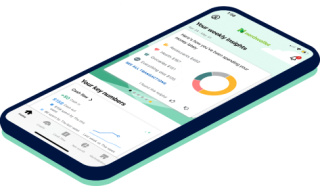You might have too much debt if your debt-to-income ratio is more than 36%.
Signs of having problematic debt include rising balances despite making regular payments, or being unable to build an emergency fund of at least $500.
Negotiating with creditors, making a plan to pay off your debt and looking into debt relief may help if you have too much debt.
Wondering if you have too much debt? Looking into your debt-to-income ratio can help answer your question. Add up your monthly debt obligations (things like auto loans, housing payments and credit card bills) and divide it by your monthly gross income. Debt loads in excess of 36% DTI can be difficult to pay off and can make accessing credit more challenging.
If you can't keep up with payments, or you're facing stress or sleepless nights, then it’s likely time to make a plan to pay off your debt or look into debt relief.
Figure out your debt load
Use the calculator below to tease out whether your debt is too much. The calculator will also offer recommendations for what to do next.
Enter various debts — such as credit card payments and medical bills — and your income into this calculator. Student loans and mortgages tend to be less problematic forms of debt, so set those aside for now.
View your result for these riskier types of debt in terms of possible solutions:
If it's less than 36%, your debt load is within the range considered affordable compared with your earnings.
If it's between 36% to 42%, look into DIY methods like debt snowball or debt avalanche.
If it's between 43% to 50%, take action to reduce your debt load; consulting a nonprofit credit counseling agency may be helpful. If it's 50% or more, your debt load is high risk; consider getting advice from a bankruptcy attorney.
Think of those guidelines as a general rule of thumb. However, if you find that your debt load is increasing in comparison to your earnings, you may want to look for ways to lower your other expenses.
Distinguish between good debt and bad debt
It's important to separate the good, the bad and the toxic. A mortgage, even one at the recent higher rates in the 7% APRs, can be weighed differently than a credit card at 22%.
What’s good debt?
When the debt's interest rate is low and fixed, and its purpose is to buy something that grows in value, like a house, business or college education, it can be considered "good" debt. It’s also good if the interest is tax-deductible, like some mortgage and student loan interest.
What’s bad debt?
Debt with high or variable interest rates that's used to buy things that lose value, is considered "bad" debt. Examples include high-interest personal loans for discretionary purchases like vacations, auto loans stretching five years or longer, or high-interest credit card debt with increasing balances.
What’s toxic debt?
Toxic debt consists of no-credit-check and payday loans with APRs above 36%, loans with a repayment time so long you end up paying more than the item is worth, or high-interest loans requiring collateral you can’t afford to lose, like your car.
Bad debt has crushing interest costs and limits your cash flow, savings and ability to borrow for goals like buying a home, says Erika Safran, a certified financial planner with Safran Wealth Advisors in New York City.
Common warning signs of having too much debt
Your debt balance is not going down despite regular payments.
You’re living paycheck to paycheck, with no money at the end of the month.
You’re not contributing to an employer-sponsored retirement plan because you need the money.
You’re unable to build an emergency fund of at least $500 to buffer against financial shocks.
You’re using credit cards for cash advances.

Are my other types of debt a problem?
The following guidelines give you an idea of how much is too much in these debt categories and what to do if you’re overloaded:
Housing
Guideline: When buying a home, the general guideline says to limit your mortgage costs to 28% of your income or less. But this may not be possible for everyone, and you might need to figure out other ways to offset high housing costs in the rest of your budget. This calculator helps you see how much house you can afford.
How to handle an overload: Look into refinancing, if you can get a better rate than you have. You could also consider downsizing or moving to a lower-cost area. If you’re refinancing or changing homes in your 40s or 50s, see if you're able to swing a 15- or 20-year mortgage, so you can be mortgage-free by retirement.
Student loans
Guideline: Don’t borrow more for a degree than you expect to make in your first year in the workforce. If you expect a starting salary of $40,000, for example, limit your loans to $10,000 per year for a four-year degree. Overborrowing is a common regret among student loan recipients, according to NerdWallet research.
How to handle an overload: Explore your repayment options, including income-driven repayment plans and refinancing.
Car loans
Guideline: Experts say your total auto costs — including car payment — should stay within 20% of your take-home pay. Car loans should be for five years or fewer and ideally accompanied by a 20% down payment. That way you don’t spend years owing more than the car is worth.
How to handle an overload: If you have an unaffordable car loan, consider refinancing it or trading your car in for a less expensive one.
Medical debt
Guideline: Medical debt is a special case since health care expenses are often beyond consumers’ control. But the amounts involved can make it unmanageable.
How to handle an overload: Try negotiating with the billing office to lower the amount due or set up an affordable payment plan. Take steps to cover the costs on your own if possible, but you may need to look into debt relief.




